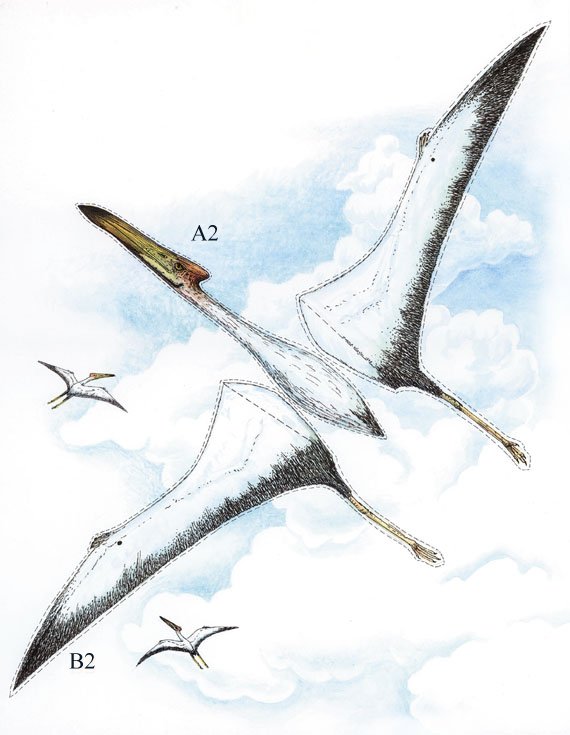
A model of Quetzalcoatlus will be the next addition to Dinosaur Hall. Like other flying lizards or pterosaurs (tera SORES), this creature became extinct at the end of the Mesozoic era, about 65 million years ago. By studying its fossil remains, scientists can tell that it had hollow bones, like a bird, which helped it to fly. But because of its build, it glided rather than flapped its wings a lot. It could not fly well in high winds, and no one is sure how it launched itself off the ground in the first place.
It was probably covered with hair, and its wings were supported by a long bony finger and were covered with a skin, like the wing of a bat. It may have eaten fish, or shellfish, or even dead animals, like vultures do.
Most scientists today believe that birds are descended from dinosaurs, but are not descended from flying lizards like Quetzalcoatlus.
Quetzalcoatlus is named for an Aztec god, Quetzalcoatl, who looked like a serpent with feathers. Do you think that is a good name for this pterosaur?
The model in Dinosaur Hall is made from casts of the bones of Quetzalcoatlus, because the real bones are very rare. You can make your own model of Quetzalcoatlus.


Now you can hang your model of Quetzalcoatlusófrom the ceiling of your room, a Christmas tree, or any place where the wind is not too strong and the fish are plentiful.1. Cut out the pieces of Quetzalcoatlus along the dotted line on this page and the facing page.2. Match up and glue body piece A1 to A2, wing piece B1 to B2, and wing piece C1 to C2.
3. Fold the wings down on the dotted line and glue them onto the thick part of the body. If you
gently smooth the wings between your fingers, you can make them curve out and down.4. Thread the needle and stick it up through the dot on one wing and down through the other, leaving a long loop. Tie off both ends.
Contents |
Highlights |
Calendar |
Back Issues |
Museums |